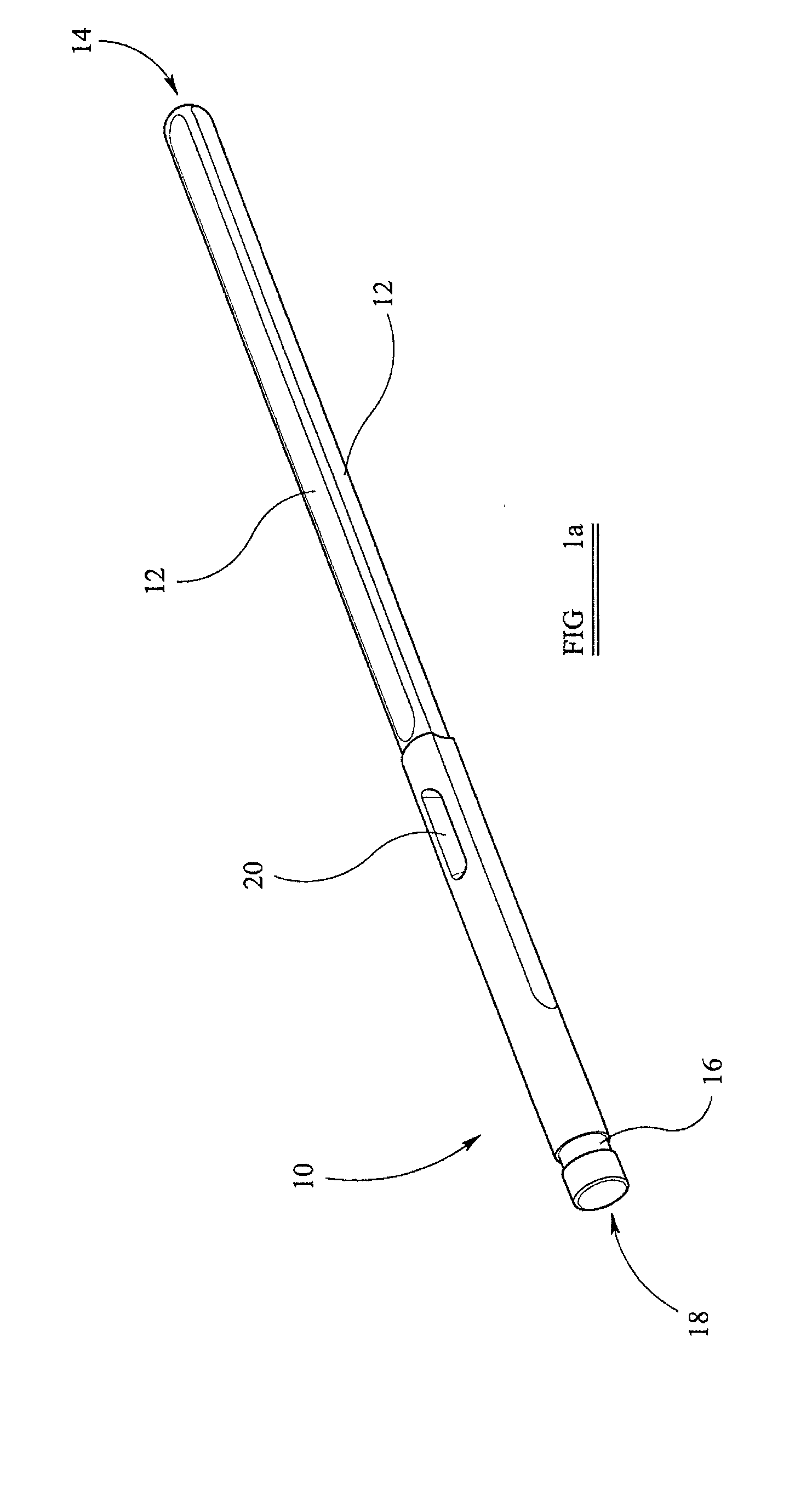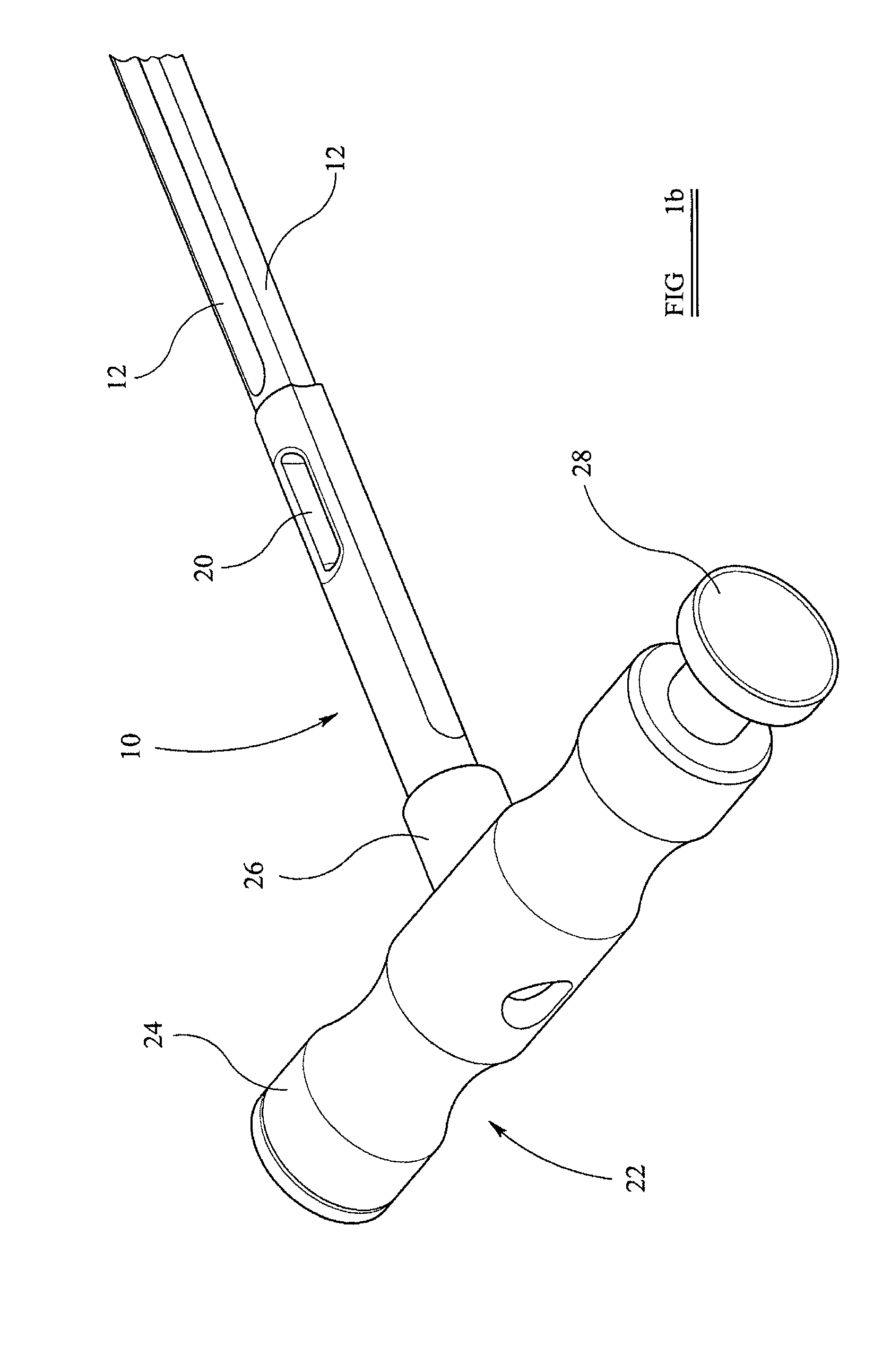Instrumentation for knee surgery
a knee surgery and instrumentation technology, applied in the field of instruments, can solve the problems of poor joint performance, patient discomfort, inconvenient operation, etc., and achieve the effects of increasing visibility, equal tensioning, and quick and easy operation
- Summary
- Abstract
- Description
- Claims
- Application Information
AI Technical Summary
Benefits of technology
Problems solved by technology
Method used
Image
Examples
Embodiment Construction
[0063]With reference to FIG. 1a, there is illustrated an intramedullary rod 10 according to the present invention. The rod 10 is made from metal and is substantially cylindrical. Four equi-spaced longitudinal grooves 12 extend along the rod 10 from a first end 14. An annular groove 16 is provided a short distance from a second end 18 of the rod 10. An aperture 20 is provided approximately a third of the way along the length of the rod 10 from the second end 18. The aperture 20 passes orthogonally through the longitudinal axis of the rod 10. The aperture 20 has a width substantially equal to the width of the longitudinal grooves 12 and is disposed such that it is aligned with a respective longitudinal groove 12 on either side of the rod 10. The aperture 20 has a length substantially greater than its width so as to form an elongate slot. The two longitudinal grooves 12 that are aligned with the aperture 20 terminate close to it while the other two longitudinal grooves 12 extend to a p...
PUM
 Login to View More
Login to View More Abstract
Description
Claims
Application Information
 Login to View More
Login to View More - R&D
- Intellectual Property
- Life Sciences
- Materials
- Tech Scout
- Unparalleled Data Quality
- Higher Quality Content
- 60% Fewer Hallucinations
Browse by: Latest US Patents, China's latest patents, Technical Efficacy Thesaurus, Application Domain, Technology Topic, Popular Technical Reports.
© 2025 PatSnap. All rights reserved.Legal|Privacy policy|Modern Slavery Act Transparency Statement|Sitemap|About US| Contact US: help@patsnap.com



